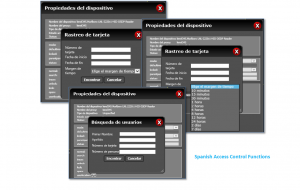At ASIS, one of the key themes will be how global organizations can create an effective security risk management program. But where should they start?
Businesses today are faced with a multitude of risks due to the complexity of technologies, regulations, system vulnerabilities, security threats and more. As your company’s information flows through networks, applications, databases and servers, it must be readily available, free from tampering and confidential to those only with authorized access.
To manage this complex environment of information, installing an intelligent software platform can convert your large amounts of unorganized, unstructured data to valuable, actionable information through correlations based on time, location, duration, frequency and type. An enterprise security risk management program should have the ability to integrate to other systems and subsystems, so that the software enables users to focus on managing situations rather than managing disparate technologies.
When implementing an enterprise security program to benefit your entire organization, follow these 3 steps for a holistic approach to IT security.
1. Prepare for challenges
Vulnerabilities, risks and threats all pose potential complications and can serve as a source of danger to your company’s information assets. Weaknesses or flaws in the system can lead to a security breach and can exist not only in technologies, but in people and business processes as well, and risks, such as loss of network connectivity, can result in devastating outcomes for your business. To prepare for these challenges, list out and categorize pertinent threats, assess vulnerabilities based on potential impact to the company, and prioritize risks based on likelihood and impact.
2. Manage outside your business
An enterprise security risk management program often entails dealing with third parties like vendors and suppliers. It is crucial for businesses to select trustworthy third-party companies, as those with unsecure networks or corner-cutting practices can create vulnerability and subsequent security threats. Be sure to know what security measures these companies have set in place, list out all of the third-party companies your business deals with, and then prioritize based on information overlap and criticality.
3. Enable security controls
Effective IT security includes non-technical controls set in place for management and operational protocols, and technical controls implemented as a safeguard incorporated into hardware, software and firmware. As CIOs begin to establish these security controls such as deciding which monitoring and filtering technologies to purchase, they must work with other parts of the company to make business decisions collaboratively as the technology will have an impact on employees and processes.
As an organization’s ecosystem of information grows increasingly complex, information security becomes a critical factor to the entire company. By implementing a strong enterprise security risk management program, your entire organization will benefit.
Want to talk with one of our in-house security experts? Come to our Intelligent Global Security Operations Center demo with Micro Focus. Learn more and sign up here.






![Vidsys Enterprise 2020R2: improved video replay controls, auto reporting + more [release notes]](https://vidsys.com/wp-content/uploads/2020/05/Spanish-Access-Control-Functions.png)

